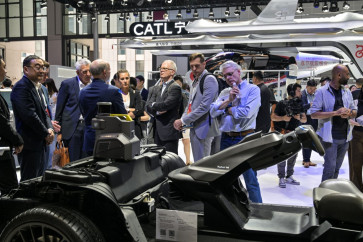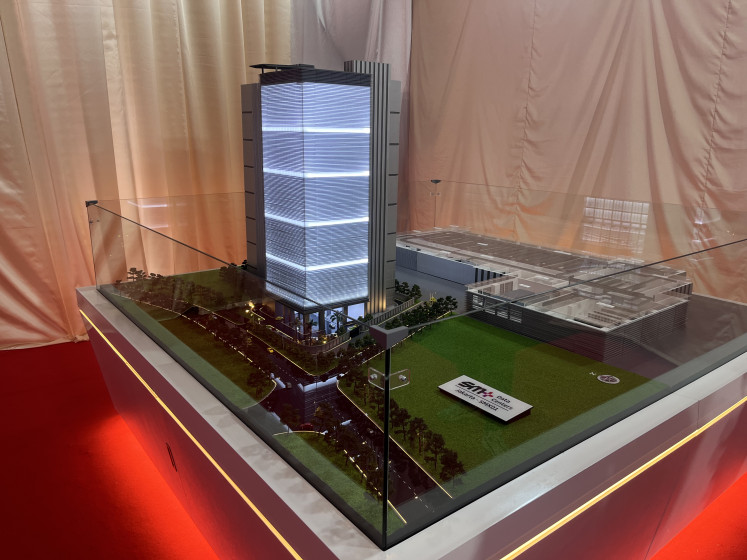Popular Reads
Top Results
Can't find what you're looking for?
View all search resultsPopular Reads
Top Results
Can't find what you're looking for?
View all search resultsUbud Hanging Gardens Hotel wins energy award
The Ubud Hanging Gardens Hotel, which won the 2008 ASEAN Energy Award for an energy efficient building in the tropical category, is a fine example of how developers have not destroyed the environment to establish a tourist resort
Change text size
Gift Premium Articles
to Anyone
The Ubud Hanging Gardens Hotel, which won the 2008 ASEAN Energy Award for an energy efficient building in the tropical category, is a fine example of how developers have not destroyed the environment to establish a tourist resort.
Less than half the resort area is covered by buildings, allowing generous water absorption as villas sit perched off a cliff on pillars.
Only 29 percent of the buildings use air conditioning and the hotel's water heater system uses gas instead of electricity. And the hotel operator turns all lighting off at 11 p.m., Hotel lighting is only turned on from 5 a.m. to 6 a.m. and again at 6 p.m. to 11 p.m.
In all, the hotel saves an estimated 115.94 kWh of electricity per day, or 42,318.1 kWh per year compared to a conventional hotel that occupies the same land size.
"The design basically follows the contours of the land," Popo Danes, the architect behind the Ubud Hanging Gardens Hotel, told The Jakarta Post recently.
"The (ASEAN) award simply emphasizes the effectiveness of blending nature and architecture," Popo added.
As his brainchild, the Ubud Hanging Gardens Hotel maintains and utilizes existing resources from its surrounding natural setting, which is on a cliff-side valley overlooking the Ayung River.
"It's very important to me for Bali's villa resorts to not disrupt Bali's environment," Popo said.
"Because in the end, that's what Bali's villa industry can offer as an added value, its environment."
The hotel's villas sit nestled in the lay of a steep cliff and a cable-car serves as transport for guests.
The surrounding treetops serve as an umbrella for the open walkways and the wind constantly breezes through the open restaurants and common areas.
The villa bedrooms and management offices are the only rooms in the hotel that are equipped with air conditioners; the rest of the hotel's buildings, save the bathrooms, are located outdoors and are roofed under wide palm leaves and other vegetation.
"We always intended to incorporate vegetation into the villa resort, so we planted palm trees, bamboo and other plants," Popo said.
He added the area surrounding the Ubud Hanging Gardens Hotel, which was completed in 2005, was not always so green. The site, which is located near the Buahan village community, was once a barren, 45-degree angled cliff.
"But after the land was purchased and used for the project, it became more beautiful," he said.
Popo's architectural creations have garnered critical acclaim for blending nature into the design whilst maintaining the surrounding environment.
His Natura Eco-Resort and Spa in Ubud, which he built and later sold, won the 2004 ASEAN Energy Award for tropical buildings.
Similar to the Ubud Hanging Gardens Hotel, the Natura Eco-Resort and Spa is located on a steep hill, with open walkways and rich vegetation, with minimal use of air conditioning.
"Air conditioning is important because it tempers the room's moisture level, but architects also need to work out how nature can also cool temperatures," Popo said.
He said too many of Bali's resorts were designed without taking environmental preservation and energy conservation into consideration.
He urged other architects to try and incorporate nature into their designs.
"There's an inside joke among architects right now, that it's hard to make a building that only uses about 900 watts per day and it's easier to make one that uses 9,000 watts per day," he said.
"Actually, that's not so funny anymore."










